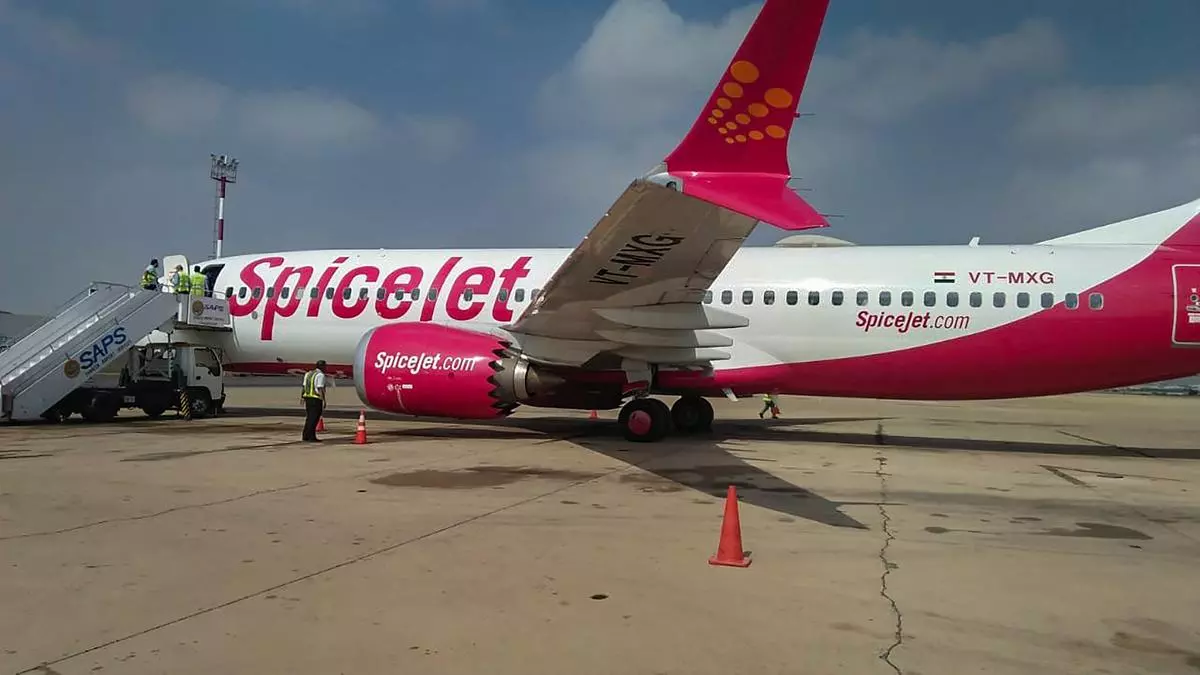SpiceJet, previously recognised as a promising contender in the Indian aviation sector, embarked on a trajectory marked by initial achievements that ultimately resulted in a significant decline. In this comprehensive article, we will thoroughly analyse the various reasons behind the failure of Spicejet. We will provide detailed descriptions of each factor that played a role in its eventual downfall.
Financial Mismanagement: A Precarious Balancing Act
The primary reasons contributing to the failure of Spicejet were attributed to financial mismanagement. The airline encountered the challenging endeavour of ensuring a stable financial position in the face of escalating operational expenses. Frequent changes in pricing strategies and ineffective cost-control measures exacerbated the situation. The financial missteps that occurred have contributed to an environment characterised by significant uncertainty, ultimately posing a threat to the economic sustainability of SpiceJet.
Intense Competition: A Battle Among Aviation Giants
One of the primary reasons contributing to the failure of Spicejet was the highly competitive market environment. SpiceJet became embroiled in a highly competitive aviation landscape. Prominent industry players such as IndiGo, Jet Airways, and Air India presented significant obstacles. SpiceJet faced substantial challenges competing for market share in a highly competitive business landscape, notably impacting its profitability.
Rising Debt: A Burden Too Heavy to Bear
The intense competition within the Indian aviation industry was characterised by the unwavering endeavours of all significant participants to attract passengers. Airlines have actively participated in price competition, providing appealing offers and implementing loyalty programmes. Although these initiatives positively impacted passengers, they significantly strained airlines’ profit margins.
SpiceJet, previously recognised as a promising contender in the Indian aviation sector, embarked on a trajectory marked by initial achievements that ultimately resulted in a significant decline. In this comprehensive article, we will thoroughly analyse the various reasons behind the failure of Spicejet. We will provide detailed descriptions of each factor that played a role in its eventual downfall.
Ownership and Leadership Changes: The Carousel of Instability
The primary factors contributing to SpiceJet’s failure were attributed to financial mismanagement. The airline encountered the challenging endeavour of ensuring a stable financial position in the face of escalating operational expenses. Frequent changes in pricing strategies and ineffective cost-control measures exacerbated the situation. The financial missteps that occurred have contributed to an environment characterised by significant uncertainty, ultimately posing a threat to the economic sustainability of SpiceJet.
One of the primary factors contributing to the failure of Spicejet was the highly competitive market environment. SpiceJet became embroiled in a highly competitive aviation landscape. Prominent industry players such as IndiGo, Jet Airways, and Air India presented significant obstacles. SpiceJet faced substantial challenges competing for market share in a highly competitive business landscape, notably impacting its profitability.
Fuel Price Volatility: Navigating Unpredictability
The intense competition within the Indian aviation industry was characterised by the unwavering endeavours of all significant participants to attract passengers. Airlines have actively participated in price competition, providing appealing offers and implementing loyalty programmes. Although these initiatives positively impacted passengers, they significantly strained airlines’ profit margins.
The expenses associated with fuel are a substantial element of an airline’s operational costs, and changes in oil prices can significantly affect financial stability. SpiceJet’s lack of effective hedging strategies exposed the company to abrupt increases in fuel expenses, resulting in a decline in profit margins.
Aircraft Fleet Issues: The Burden of Legacy
The operational complexities arising from SpiceJet’s exclusive reliance on the Bombardier Q400 aircraft significantly contributed to the airline’s failure. Financial limitations hindered the airline’s efforts to diversify and modernise its fleet. The rules above posed obstacles to operations optimisation and adversely affected SpiceJet’s ability to remain competitive.
Airlines must possess a diverse, contemporary aircraft fleet to respond to evolving market dynamics and uphold operational efficiency. SpiceJet’s need for more investment in new, fuel-efficient aircraft models has disadvantaged the company in achieving cost savings and providing enhanced passenger comfort.
Pricing Wars: The Double-Edged Sword
Engaging in fierce price competition with competitors to attract passengers proved to be a complex issue for SpiceJet. It was one of the significant contributing factors to the challenges faced by the company. The airline frequently provided discounted ticket prices to maintain competitiveness, even at levels that needed to be financially viable in the long term. Although this approach effectively attracted passengers, it resulted in a significant decline in revenue and profitability.
Providing significantly reduced fares to gain a competitive advantage can pose risks within the airline industry. Although it can potentially result in higher passenger volumes, it frequently leads to minimal profit margins or even financial losses. SpiceJet’s aggressive pricing strategy put a significant financial strain on the business.
Regulatory Challenges: Navigating the Complex Regulatory Landscape
SpiceJet encountered regulatory obstacles involving conflicts with aviation authorities regarding safety compliance and adherence to aviation regulations. These disputes can lead to financial penalties and operational limitations and harm the airline’s reputation, introducing additional intricacies to its operations.
Regulatory compliance is imperative in the aviation industry, directly impacting passenger safety and operations’ integrity. The legal conflicts and regulatory disputes encountered by SpiceJet resulted in a significant allocation of time, resources, and management’s attention, thereby diverting their focus from strategic initiatives and growth opportunities.
Economic Downturn and Pandemic Impact: Unprecedented Challenges
The aviation industry faced significant challenges due to the economic downturn and the unforeseen impact of the COVID-19 pandemic. These factors played an essential role in the difficulties experienced by Spicejet. Like numerous other airlines, SpiceJet experienced a substantial decline in passenger demand and revenue amidst the pandemic. The airline’s failure to promptly adjust to these exceptional challenges further intensified its financial difficulties.
The aviation sector experienced a significant disruption due to the sudden cessation of global travel brought about by the onset of the pandemic. This led to the grounding of planes and devastatingly impacted the industry. The airline industry experienced a significant financial challenge due to a sharp decline in passenger bookings, leading to numerous carriers facing financial difficulties in maintaining operations. SpiceJet was already dealing with financial problems, which made it even more vulnerable to the adverse effects of the recession and the pandemic’s consequences.
Conclusion
SpiceJet’s failure can be attributed to a complex interplay of factors, including financial mismanagement, intense competition, mounting debt, operational issues, leadership instability, fuel price volatility, fleet challenges, pricing wars, regulatory disputes, and the economic downturn magnified by the pandemic.




